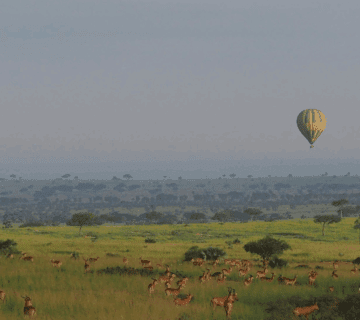How Much Cash Should I Carry in Kenya? A Guide to Navigating Your Journey with Ease
Traveling to Kenya is an exciting adventure filled with vibrant landscapes, unique cultures, and thrilling wildlife. Whether you’re planning a safari in the Maasai Mara, exploring Nairobi, or visiting the coastal beaches, Kenya offers a wealth of experiences that will leave you with unforgettable memories. However, when it comes to traveling abroad, one crucial question often arises: how much cash should I carry? Understanding how to manage your money while traveling in Kenya is essential for a smooth and stress-free experience.
Understanding the Kenyan Currency
Kenya’s official currency is the Kenyan Shilling (KES), and it is important to be familiar with the exchange rates and the denominations available. As of today, the exchange rate fluctuates, so it’s wise to check the current rates before you travel. The Kenyan Shilling comes in various denominations, including coins (1, 5, 10, 20, and 40 KES) and banknotes (50, 100, 200, 500, and 1000 KES).
While Kenya is known for its modern banking infrastructure, cash remains essential in many areas, especially in rural regions where credit cards and digital payments may not be accepted. Thus, carrying a combination of cash and access to other payment methods ensures that you’re prepared for different situations.
Cash in Kenya: Why It’s Important
You may be wondering, “Why do I need cash in Kenya when I have credit cards and mobile money?” The reality is that, despite Kenya’s progress in digital payments, there are still several reasons why cash is necessary for your trip.
-
Accessibility to remote areas: While urban centers like Nairobi, Mombasa, and Kisumu have modern payment systems, smaller towns and rural areas may lack reliable internet connections and card payment systems. In these areas, paying with cash is often the only option for services like transportation, accommodation, and small purchases at local markets.
-
Tipping: Tipping is a common practice in Kenya, especially in the hospitality and tourism sectors. While it’s possible to tip using mobile money or credit cards in some places, having cash on hand allows you to easily and discreetly tip your driver, guide, hotel staff, or restaurant workers.
-
Emergency situations: While Kenya is generally safe for tourists, unexpected situations can arise. Whether it’s a medical emergency, a last-minute change of plans, or needing to purchase supplies in a remote location, cash ensures that you have access to necessary resources at all times.
How Much Cash Should I Carry in Kenya?
The amount of cash you need depends largely on the duration of your trip, the type of activities you plan to do, and the regions you will be visiting. Here are some considerations to help you determine how much cash to carry:
-
Length of Stay and Budget: If you’re staying for a short period in urban areas, a few thousand Kenyan Shillings may suffice for small purchases and transportation. However, if your itinerary includes safaris, rural explorations, or longer stays, you may want to carry a larger amount. For a 7-day trip, for example, carrying between KES 20,000-40,000 should be sufficient for basic expenses, excluding accommodation and major excursions.
-
Urban vs Rural Areas: If your trip involves only the major cities and tourist hubs, you can rely more on credit cards, mobile money (like M-Pesa), and ATMs. However, if you’re venturing into more remote areas for trekking or visiting local villages, it’s best to carry enough cash for the duration of your time there, as ATMs may be few and far between.
-
Tourist Activities and Shopping: If you plan on engaging in various tourist activities, such as safaris, visiting national parks, or purchasing souvenirs, it’s a good idea to have cash readily available. Many tour operators, park entrance fees, and local markets may prefer cash payments. For example, entrance fees for popular parks like the Maasai Mara can range from KES 1,500-5,000 per person, and local guides or safari drivers may prefer a cash tip of KES 1,000-2,000.
-
Accommodation Costs: High-end hotels and lodges often accept credit cards, but smaller guesthouses or boutique lodges in more remote areas may only accept cash. Check the payment methods in advance, especially if you’re staying in less touristy places.
Tips for Managing Your Cash in Kenya
To make your trip to Kenya as smooth as possible, here are some practical tips for managing your money:
-
Carry a mix of payment options: While cash is important, carrying a combination of payment methods can help in various situations. Consider bringing a credit or debit card as a backup in case you need to withdraw more money from ATMs. Mobile money options like M-Pesa are widely used in Kenya and can be a convenient alternative for transactions, even in more remote areas.
-
Exchange currency in advance: If possible, exchange some currency before you travel to Kenya, as exchange rates at airports or hotels may not be as favorable. You can also withdraw cash from ATMs upon arrival, but be mindful of foreign exchange fees and ATM withdrawal limits.
-
Use ATMs wisely: ATMs are available in most major cities and towns, but not all ATMs accept international cards. It’s a good idea to use ATMs located at banks or shopping malls, as they are more likely to be secure. When withdrawing cash, be sure to take out enough for a few days to avoid frequent visits.
-
Avoid carrying large sums of cash: While it’s important to have cash on hand, it’s also wise not to carry excessive amounts of money with you. Use a money belt or secure wallet to keep your cash safe. If you’re traveling in groups, consider splitting the cash among different members to reduce the risk of losing it all at once.
-
Plan for tipping: Tipping is an important part of the Kenyan culture, especially in the tourism industry. While tips are not mandatory, they are appreciated. For example, you can tip your safari guide KES 1,000-2,000 per day, depending on the service provided. It’s also customary to leave a small tip for hotel staff and restaurant workers. Carrying small denominations of KES 50-200 notes will make tipping easier.
Alternatives to Carrying Cash
In addition to cash, there are other options for managing money while in Kenya:
-
M-Pesa: Kenya is a global leader in mobile money, with M-Pesa being the most popular mobile payment system. M-Pesa allows you to send, receive, and store money on your mobile phone, making it a convenient and secure way to pay for goods and services. Many shops, hotels, and taxi drivers accept M-Pesa, making it a great alternative to cash in urban areas.
-
Credit and Debit Cards: Most major hotels, restaurants, and shops in cities accept international credit and debit cards. Visa and MasterCard are the most widely accepted, but American Express may not be as common. Always check with the merchant beforehand to confirm they accept card payments.
-
Traveler’s Checks: While not as commonly used anymore, traveler’s checks can be an option for those who prefer to avoid carrying large amounts of cash. They are accepted at most banks and exchange bureaus, though you may encounter a fee for converting them to cash.
Conclusion: Travel with Confidence
When traveling to Kenya, it’s essential to balance the amount of cash you carry with other payment options. Carrying enough cash for day-to-day expenses, tips, and unexpected situations will give you peace of mind, especially in areas where card payments may not be accepted. Be sure to manage your money wisely and take precautions to keep your cash and valuables safe. With proper preparation, your Kenyan adventure will be stress-free, allowing you to fully immerse yourself in the incredible experiences this beautiful country has to offer.



